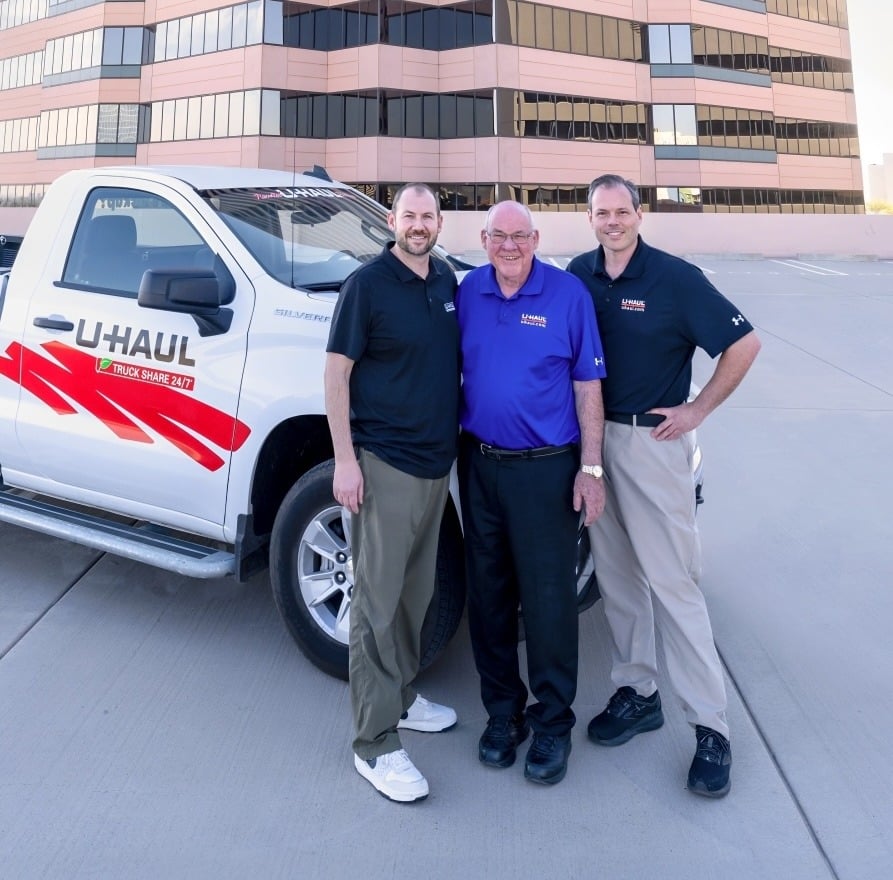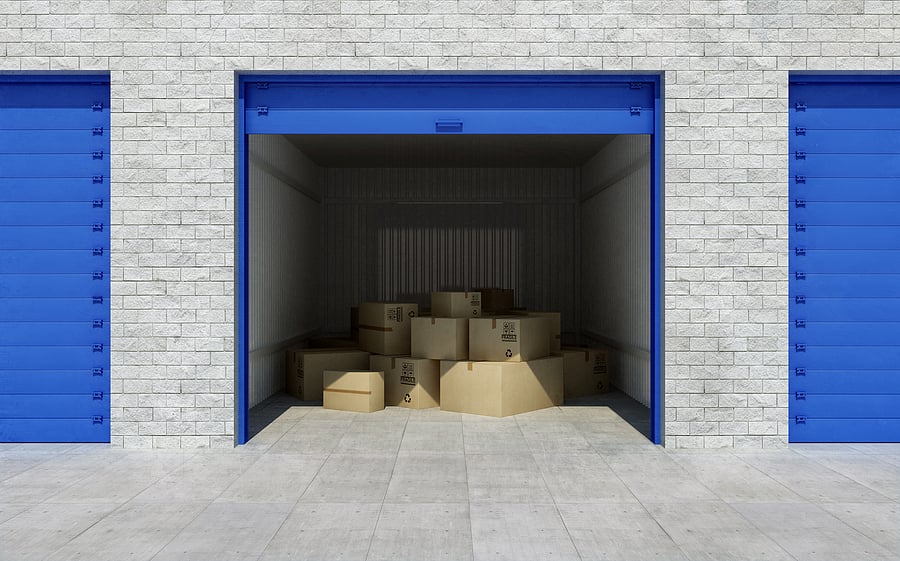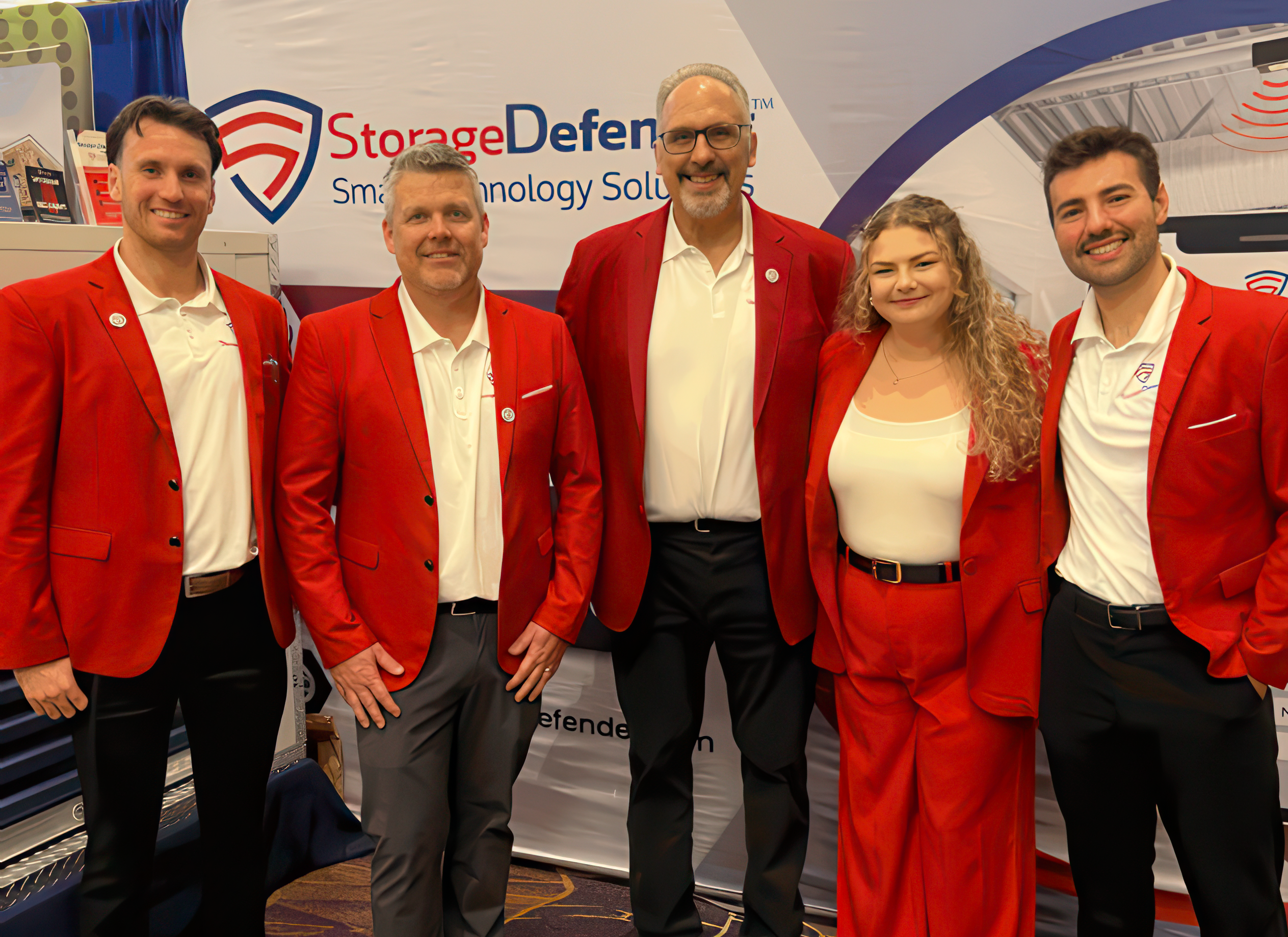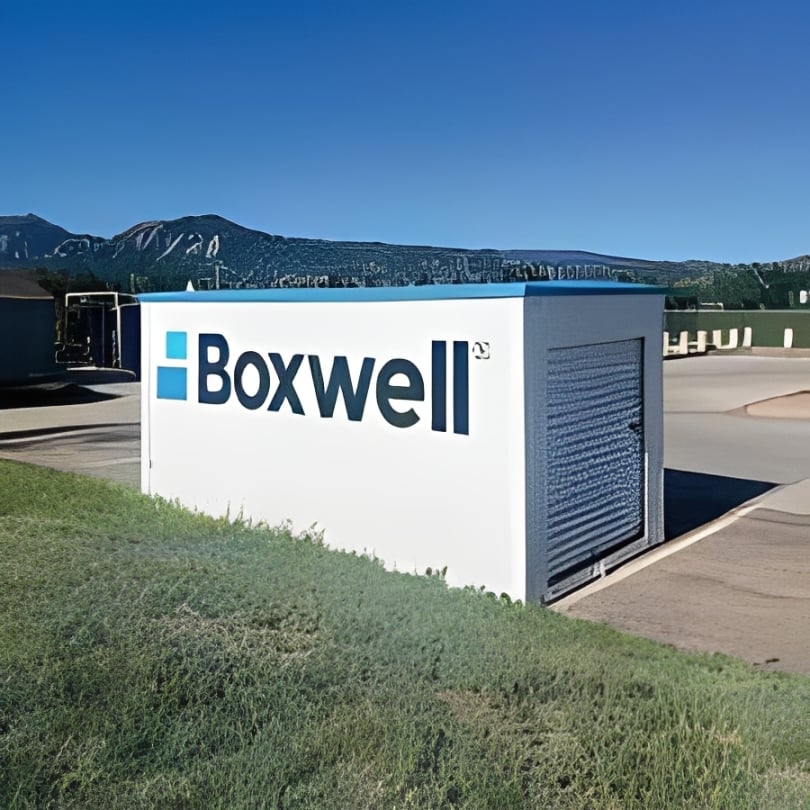Boat And RV Financing Options In Today’s Market
While the self-storage industry has continued to boom, so has the world of boat and RV storage. Even though sales of RVs are down roughly 10 percent in the last year, and sales of boats are maintaining their level and are expected to do the same over 2020, there are still several areas that could use storage for these toys. While a needed service, many times boat and RV storage is bypassed to build self-storage because the returns for this segment aren’t quite as good as those of self-storage. But, if you build it in the right location and provide what the customers are seeking, there is still ample opportunity for success. If you are looking to invest in boat and RV storage, you have several financing options which are similar to those available for self-storage.
Boat And RV Storage Vs. Self-Storage
In many places around the country, there is still a shortage of boat and RV storage. People often purchase boats and RVs and don’t think about the storage options until after the fact. With most new neighborhoods creating homeowners associations with restrictive covenants on boat and RV storage, the need continues to grow, creating opportunity for those who are paying attention.
Those entering the storage industry consider the two options and tend to opt for self-storage over boat and RV storage. Boat and RV storage requires more land for fewer units, which is why you typically don’t make as much money per square foot. Using high-priced property in areas that are more convenient, such as being in town, wouldn’t make financial sense for boat and RV storage; that property is better suited for self-storage. Therefore, it’s best to look for land for boat and RV storage outside of town, near the city limits, or out in the country, where larger parcels of land are available and land is less expensive. One of the reasons that you need larger parcels of land is because these storage facilities require wider driveways. For example, a building that’s 40 feet wide requires a driveway that is 125 percent of that, so it needs to be 50 feet wide. With a self-storage facility, you typically only need a 30-foot driveway, at the most. The space required for the driveway is wasted space that cannot be rented out. Comparing total facility size, seven to 10 acres of land may be required to construct 100,000 square feet of boat and RV storage, whereas a self-storage facility of 120,000 square feet can be built on about two to three acres.
Despite the differences in the types of facilities, construction costs are actually similar for self-storage and boat and RV storage; it’s not necessarily less expensive to build boat and RV storage, but the cost of land is where you can potentially see savings. In markets saturated with self-storage facilities, finding the right piece of property outside of town to build boat and RV storage facilities can be lucrative if there is a demand. Many people are often willing to drive several miles to park their boat or RV—especially their RVs. In fact, in markets with a severe shortage of storage, owners can increase rents to make the venture more profitable. Also, if you are close to a lake, people who use that lake for their boating may live away from the lake and would rather use your facility than haul their boat back and forth home.
Another option is augmenting a regular self-storage facility with some boat and RV storage to increase revenue. Sometimes there might be additional land that you plan to use later for self-storage for additional phasing but could be used for parking until you are ready to add that next phase.
Despite this demand, it is still a segment that many are hesitant to enter. Some are concerned that if the economy goes south, or if there is a recession, people will start turning in their boats and RVs. At Live Oak, we did some homework a couple of years ago interviewing folks in the industry that had boat and RV storage during the Great Recession. We asked how their boat and RV business fared and what they saw overall in that segment. Surprisingly, some said that they had to expand. Most said that they had no issues with that part of their business. Oftentimes, the people who can afford those toys don’t get hit as hard of others during economic downturns and won’t let “their baby go” either back to the bank or to a sale. One facility owner actually offered this valid point: “Think about it … even if someone was to turn in their keys to their boat or RV, the bank isn’t going to come and get it and put it in their parking lot”. They still need somewhere to store it while they go through the process of repossession and disposition.
Types Of Facilities
There are a variety of types of facilities for boat and RV storage. The most common style is simply a field where the vehicle or boat can be parked outside. The next step up is a canopy structure, followed by a three-sided structure, and then a fully enclosed structure. A canopy, which is essentially just a roof, protects RVs and boats from weather exposure from above. A three-sided structure is just a canopy with walls on three sides and no door. This style offers more protection from the elements. However, it’s important to study the location before constructing this style; if there are high winds, it can create a wind trap which could pull the roof off and possibly blow off the walls. A fully enclosed structure, with roll-up doors, is obviously the most expensive choice to construct, but these structures offer the best security and protection from weather.
One unique style recently seen in the marketplace is a three-sided structure with a canopy that uses a chain link fence for doors. The facility uses two gates that come together in the middle, similar to a French door. This offers security without having a fully enclosed unit. The chain link gate is a lot less expensive than large roll-up doors, which require a motor, an opener, and a personnel door. For the markets that want a fully enclosed facility, this offers a sort of compromise, providing more security without the extra expense.
As far as costs are concerned, a canopy will be just slightly less expensive than a climate-controlled self-storage building. The fully enclosed option is more expensive due to the heavy structure to support the roof with wide open spaces below and the larger commercial-type doors that are needed. The wider driveway space also has to be taken into consideration. One benefit to constructing the canopy style is that it can be built so that the vehicles can be pulled in at a 60-degree angle, which allows you to decrease driveway space. This can also be done with fully enclosed buildings, but it is much harder to build and makes it more expensive, so it is rarely done.
There are plenty of other amenities that can be added to a boat and RV facility. For example, some facilities offer dump stations, which are convenient for the renters. Some also provide electricity, offering renters the convenience of plugging in their trickle chargers, for example, to ensure that their RV and boat batteries stay charged. Some will require that you get your own meter so that the expense of the electricity is paid by the renter.
One other consideration, depending on your location, could be to install solar panel systems on the rooftops of these structures. These can help offset your operating expenses by selling power back to the local power grid. This can also sometimes open up more financing options as well.
Financing Similarities
When it comes to financing, there are no major differences between the funding of traditional self-storage and boat and RV storage. The lending process is similar at Live Oak Bank, a major lender in the self-storage industry. The bank will want you to have a feasibility study done, which determines if there’s a market at the location, what size is needed for the facility, how many spaces are needed, how much rent will be collected, etc. Feasibility studies for boat and RV facilities are done differently than self-storage studies, so be sure that you work with someone who has a lot of experience in doing these types of studies.
Some lenders will consider boat and RV storage and assume that a downturn in the economy will cause customers to sell boats and campers. As mentioned earlier, Live Oak conducted research and found that during the last recession, boat and RV storage actually grew in some markets. Even during the recession, many people still held onto their boats and RVs because they are such big investments and are so enjoyable. Even if people do sell their boats and RVs or banks had to repossess them, storage is still needed. Banks can’t take the boats and RVs to the bank parking lot.
Lending Boom
A decade ago, finding funding for self-storage ventures was a challenge. Banks were hesitant to dole out funds during the recession. It was challenging for people who wanted to build and expand their businesses because they couldn’t get the money. Even people with great credit and lots of personal financial wealth could not obtain loans. Things are different today. Since 2014, when financing started to open up again, it seems that lenders that have appeared everywhere, looking for opportunities in the storage industry.
One important change occurred in late-2010 when the SBA added self-storage as an eligible industry for SBA loans. Previously, storage was primarily financed through conventional lending and private equity. This loan program alone has helped an untold number of people get into this industry and be successful.
Today, there’s more money available in the industryfrom:
- Conventional loans
- Private equity
- SBA 7(a)
- SBA 504
- USDA
- Commercial mortgage-backed securities (CMBS)
- Life insurance
- Joint ventures
Conventional loans. These loans usually have good rates but require more equity, typically between 25 and 35 percent. There is no limit to these loans, and they have up to 25-year terms. Each conventional loan is different according to the bank you choose, their equity requirements, the kind of financial covenants they include in the loan, and the term length. This is the most commonly used loan for storage facilities, but it typically requires the most equity and has the most strings attached.
Private equity. There are two types of private equity: institutional and friends and family. Depending on the type of private equity, the terms, conditions, and rates vary. Private equity is very flexible and fluid, but the lenders usually have set terms on recouping their money within a certain number of years so they can use the profits to make additional investments. There is probably more private equity in the industry now than ever before.
SBA 7(a). SBA loans are a viable option for storage facilities when the owner/developer doesn’t have a lot of money to put down.The SBA 7(a) loan is for deals up to $5 million. It requires as little as 10 percent equity, three-year prepayment penalty, no financial covenants or balloons, and offers a 25-year fully amortizing term. You can also get the lease-up working capital that you would need to cover the bills while you reach stabilization. Depending on the bank that you use, it is possible that you could get a conventional pari-passu loan to get above the $5 million mark if needed while still getting the benefits of the 7(a) loan.
SBA 504. This program can get you larger amounts than the 7(a). Part of the loan is fixed at a low rate for 25 years; it typically requires 15 percent minimum equity and doesn’t allow for working capital to be included. The prepayment penalty is 10 years for the SBA portion of the loan. If you have used up your allotted SBA loan amount, you may be able to use the SBA “green” program, which will allow you to get more SBA program dollars, but the project must contain certain aspects of renewable energy.
USDA. USDA loans are sometimes helpful and must have the address qualified for eligibility. These loans are similar in some ways to SBA loans and usually used if there is a reason that SBA loans can’t be used, for example, if you want to use one of the large national REIT third-party management companies.
CMBS. These are quite often interest-only loans that typically require equity but offer low rates and terms of five to 10 years. These are normally non-recourse. Usually, a CMBS loan is going to be used to refinance a stabilized facility with a good track record and not to build a new one or to purchase a facility.
Life Insurance. Also requiring a lot of equity, these loans typically offer low interest rates with five- to 10-year fixed-rate terms and are possibly fully amortizing up to 20 years. These are also going to typically be for used to refinance stabilized facilities with a good track record.
Joint Venture. Another available option is joint ventures. These are opportunities with certain companies that will provide equity and help finance your construction. These offer good sources for equity, but you need to be careful in defining the terms such as control, decision-making, and fees. These loans usually have a minimum amount that they will take on.
Lender Experience
For small business owners in the storage market, working with a lender who has experience in the industry is very important, even more so if you are looking to acquire an SBA loan. Live Oak Bank primarily funds self-storage and boat and RV storage through SBA loans and is the largest SBA lender by dollar volume in the industry. Soon after the industry started taking off, SBA loans became a clearer option for a lot of folks who didn’t have the equity needed for conventional lending or other sources. It allowed the small business owner to be able to get into the business without the larger amounts of equity that was needed for other lending sources.
The key to Live Oak’s success is experience. The bank has a unique model of focusing only on specific industries and hiring lenders who have vast experience in those industries. These experienced lenders bring a lot to the table for their customers, offering credibility right out the gate.
Live Oak’s self-storage lending team has direct experience in self-storage construction, management, and even ownership. The team can offer new self-storage owners advice from the perspective of an owner as well as a lender. This experience allows the team to offer customers referrals for suppliers of their various needs, including software, kiosks, general contractors, building and door suppliers, etc. The relationship doesn’t end when the loan closes; the team works with customer throughout the life of the loan to ensure their success.
Real-World Experience
The Live Oak lending team conducts a site visit on every deal that it finances—whether it’s an existing facility, a building for conversion, or just dirt. The site visit not only allows the lenders to inspect the property but also gives them the chance to offer the customer advice on any potential problems or issues that might even save the customer money on the purchase.
The Road Ahead
It appears that the demand for boat and RV storage is still a potential opportunity in many areas. Lenders are widely available for those who are ready to start; indeed, there are more lenders than ever offering financing for self-storage. Despite the readiness of the market and the availability of financing, there are some things to watch. Do your homework on your market and on your lender. Look for value and performance, not just the lowest rate. The same goes for the building supplier if you are going to build. Look for quality. Don’t just look for the lowest price. Whether it is your GC, your building, or your lender, you usually get what you pay for.
You have already seen reference to feasibility studies. Be sure to invest your money in a good study. You want that experienced third party to give you the info that you need. Lenders who care about you having a successful business will require one.
Boat and RV owners will pay to store their toys, so there’s opportunity out there. Those interested in seizing that opportunity should proceed with caution. The bottom line is that if you are planning to invest in boat and RV storage, do your homework. Gravitate to lenders who have experience in the industry to help with the unknowns and ultimately protect your bottom line.
More Content
Popular Posts
The self storage industry is in a precarious...
Joe Shoen, CEO of U-Haul, has had enough.
Like its name implies, Surprise, Ariz., a...
Joe Shoen has had enough.
In a record-breaking deal finalized May 12,...
Senate Bill 709 (SB709) has many in the...
Donald Trump has just reclaimed the White...
The question of “abandonment” of stored...
Self-storage operators wear a lot of hats....
In 1992, Clinton strategist James Carville...
Recent Posts
From policy pivots in Ottawa to tariff...
Self-storage operators have struggled to...
Their signature red coats may draw attention...
Nailing down Josh and Melissa Huff for an...
Most self-storage operators are running...
The storage industry has long been a sound...
Despite widespread adoption of modern...
This year marks a major milestone for...



















